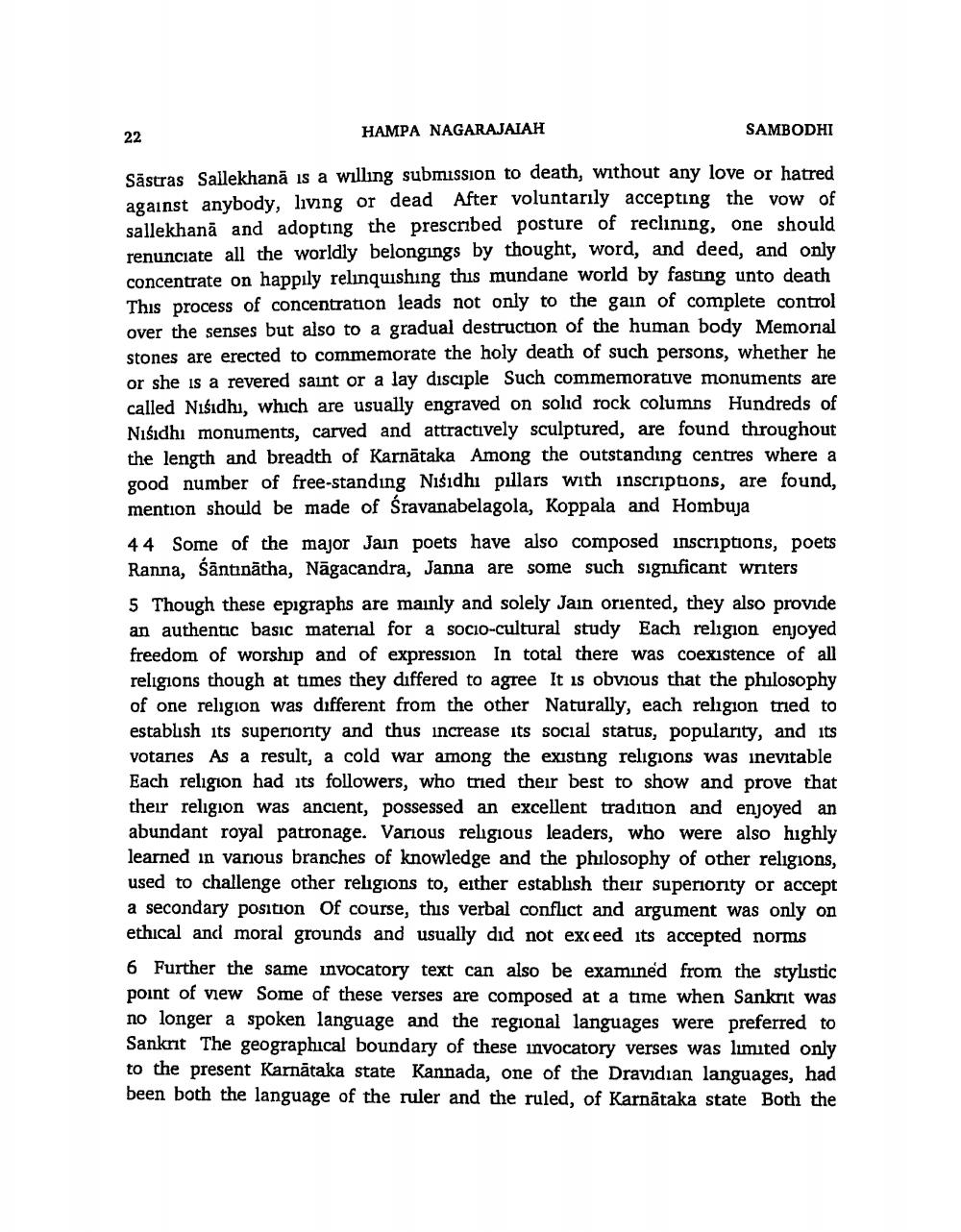________________
22
SAMBODHI
Sästras Sallekhana is a willing submission to death, without any love or hatred against anybody, living or dead After voluntarily accepting the vow of sallekhand and adopting the prescribed posture of reclining, one should renunciate all the worldly belongings by thought, word, and deed, and only concentrate on happily relinquishing this mundane world by fasting unto death This process of concentration leads not only to the gain of complete control over the senses but also to a gradual destruction of the human body Memorial stones are erected to commemorate the holy death of such persons, whether he or she is a revered saint or a lay disciple Such commemorative monuments are called Nifadhi, which are usually engraved on solid rock columns Hundreds of Nisadhi monuments, carved and attractively sculptured, are found throughout the length and breadth of Karnataka Among the outstanding centres where a good number of free-standing Nisidhi pillars with inscriptions, are found, mention should be made of Śravanabelagola, Koppala and Hombuja
HAMPA NAGARAJAIAH
44 Some of the major Jain poets have also composed inscriptions, poets Ranna, Santinatha, Nagacandra, Janna are some such significant writers
5 Though these epigraphs are mainly and solely Jain oriented, they also provide an authentic basic material for a socio-cultural study Each religion enjoyed freedom of worship and of expression In total there was coexistence of all religions though at times they differed to agree It is obvious that the philosophy of one religion was different from the other Naturally, each religion tried to establish its superiority and thus increase its social status, popularity, and its votanes As a result, a cold war among the existing religions was inevitable Each religion had its followers, who tned their best to show and prove that their religion was ancient, possessed an excellent tradition and enjoyed an abundant royal patronage. Various religious leaders, who were also highly learned in vanous branches of knowledge and the philosophy of other religions, used to challenge other religions to, either establish their superionty or accept a secondary position Of course, this verbal conflict and argument was only on ethical and moral grounds and usually did not exceed its accepted norms
6 Further the same invocatory text can also be examined from the stylistic point of view Some of these verses are composed at a time when Sankrit was no longer a spoken language and the regional languages were preferred to Sanknt The geographical boundary of these invocatory verses was limited only to the present Karnataka state Kannada, one of the Dravidian languages, had been both the language of the ruler and the ruled, of Karnataka state Both the




